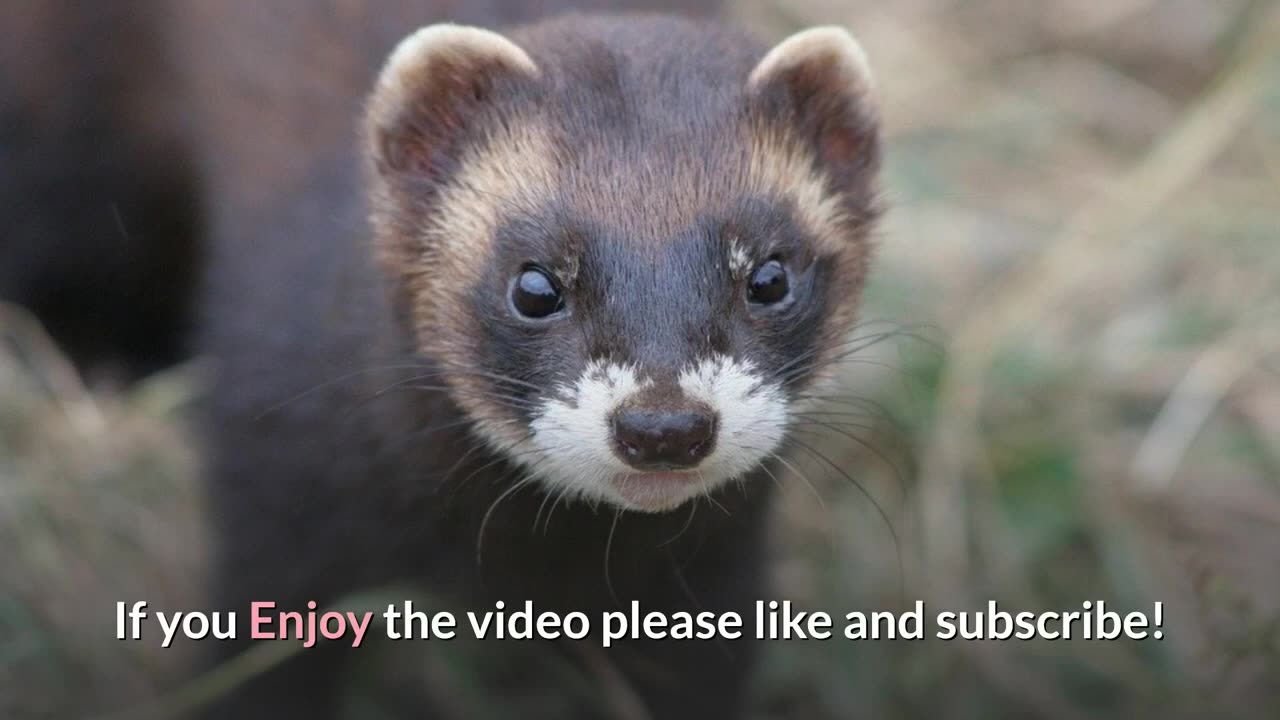Premium Only Content

European Polecat || Description, Characteristics and Facts!
The European polecat, scientifically known as Mustela putorius, is a fascinating mammal belonging to the Mustelidae family, which also includes weasels, otters, and badgers. Here's a snapshot of its description, characteristics, and some interesting facts:
Description:
The European polecat has a slender body, short legs, and a long, bushy tail. Its fur is typically brown with a black mask-like marking across its eyes, similar to that of a raccoon. Their coats can vary in color, ranging from dark brown to almost white. They have a pointed snout and sharp teeth, ideal for capturing prey.
Characteristics:
Habitat: European polecats inhabit a variety of habitats, including forests, grasslands, and farmland.
Diet: They are carnivorous predators, preying on small mammals, birds, reptiles, and insects.
Nocturnal Behavior: Polecats are primarily nocturnal, hunting and foraging under the cover of darkness.
Solitary Creatures: They are mostly solitary animals, only coming together during the breeding season.
Scent Marking: Polecats use scent marking to establish territories and communicate with other polecats.
Adaptability: They are highly adaptable animals, able to thrive in diverse environments.
Facts:
Despite their name, European polecats are not actually closely related to cats but are part of the weasel family.
They are skilled hunters and play an important role in controlling rodent populations.
European polecats were once heavily persecuted due to their reputation as poultry raiders but are now protected in many European countries.
They have a distinctive musky odor, which they use for communication and defense against predators.
Polecats have a playful nature, often engaging in mock fights and chasing games.
#EuropeanPolecat #Mustelidae #Carnivore #NocturnalPredator #WildlifeConservation #Biodiversity
-
 2:48
2:48
Steven Crowder
22 hours agoCROWDER CLASSICS: What’s This? | Nightmare Before Kwanzaa (Nightmare Before Christmas Parody)
242K12 -
 33:49
33:49
Quite Frankly
18 hours agoThe Christmas Eve Midnight Telethon
60.2K7 -
 2:12:46
2:12:46
Price of Reason
18 hours agoAmber Heard BACKS Blake Lively Lawsuit Against Justin Baldoni! Is Disney CEO Bob Iger in TROUBLE?
17.8K8 -
 1:01:17
1:01:17
The StoneZONE with Roger Stone
12 hours agoChristmas Edition: Why the Panama Canal is Part of the America First Agenda | The StoneZONE
94.5K31 -
 18:12:15
18:12:15
LFA TV
23 hours agoLFA TV CHRISTMAS EVE REPLAY
117K14 -
 4:33:48
4:33:48
tacetmort3m
1 day ago🔴 LIVE - THE ZONE KEEPS PULLING ME BACK - STALKER 2 - PART 15
61.5K12 -
 22:45
22:45
Brewzle
20 hours agoI Went Drinking In A Real Bourbon Castle
43.4K4 -
 48:36
48:36
PMG
1 day ago $3.71 earned"Parkland Parent Speaks Out On Kamala Harris Using Victims"
35.4K8 -
 4:06
4:06
The Lou Holtz Show
18 hours agoCoach Lou Holtz’s Heartfelt Christmas Message 🎄 | Family, Faith & Notre Dame Spirit 💚 #christmas
26.2K -
![ROSEANNE BARR - Her Journey, TRUMP, and the MAGA GOLDEN AGE! [INTERVIEW]](https://1a-1791.com/video/s8/1/M/m/B/2/MmB2v.0kob.1-small-ROSEANNE-BARR-Her-Journey-T.jpg) 51:35
51:35
Dr Steve Turley
1 day ago $20.32 earnedROSEANNE BARR - Her Journey, TRUMP, and the MAGA GOLDEN AGE! [INTERVIEW]
60.7K54